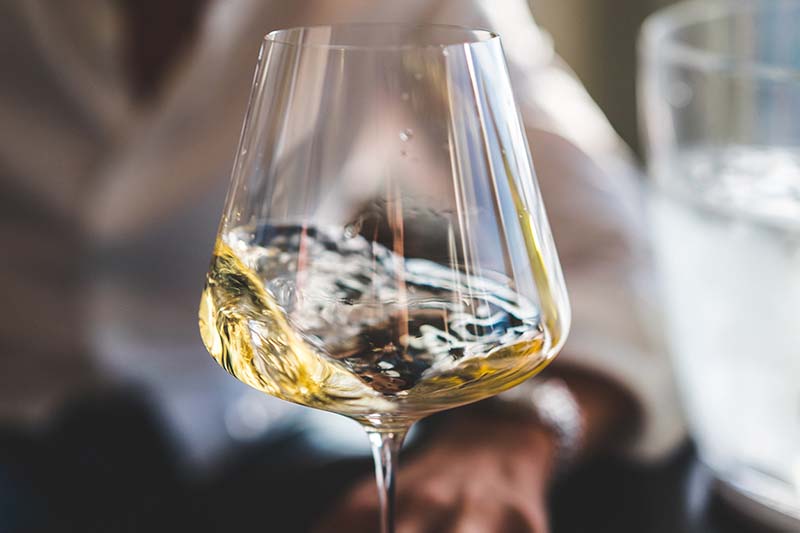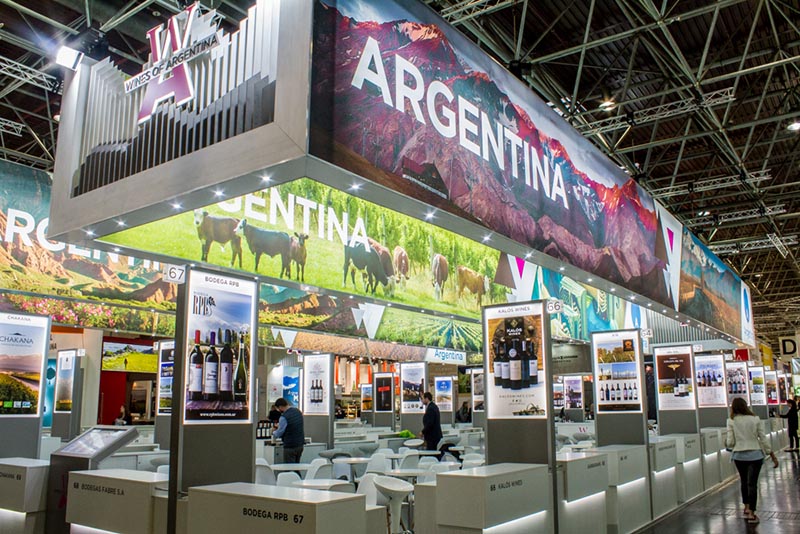In the world of whites, Chardonnay is king. It’s found in every wine producing region on the planet but very few are able to offer a distinctive profile. However, the French variety does change in style depending on the terroir from which it came, offering everything from tropical profiles to complex, nuanced expressions.
Between these two extremes, which can be easily categorized as being from warm and cold climates respectively, Chardonnay can take on a wealth of clearly differentiated styles. Argentina boasts a handful of continental climates that range from cool to cold that one won’t find anywhere else on the planet and the country is currently experiencing a minor revolution among white wine production in which Chardonnay Argentina 2022 is revealing its true potential in the country.
Argentine white wines are attracting so much attention that at the latest Prowein, the industry fair in Düsseldorf, Germany, Wines of Argentina and the Federal Investment Council held a seminar on the subject for importers and distributors from around the world.

On the one hand, there are the high altitude whites in which the cold weather slows down ripening and preserves the freshness of the varietal, but there are also other regions such as Patagonia where the cold, desert conditions (with the exception of Trevelin) make for more unique styles.
In short, the Chardonnay Argentina 2022 is the result of a combination of cold and extreme continental conditions where the intensity of the sun and soil types are factors that either enhance or moderate their effects.
Chardonnay Argentina 2022: the altitude factor
At one extreme of continental conditions, we find the Uco Valley, especially two Geographic Indications with their own distinctive qualities: Gualtallary and San Pablo. Together, these bordering regions form a kind of wedge that runs along the mountain range, sheltered by slopes. In terms of dimensions, they are both 3300 feet above sea level at their lowest and, across a 7-mile stretch, rise to 5600 feet with vineyards planted throughout. This means that they shift from a mild zone to an extremely cool one.
Spanning about 200 hectares, both are at the forefront of top-quality Chardonnay: these areas are producing the most extreme and modern styles to date with a combination of ripeness and tension set somewhere between Chablis and Burgundy. But that doesn’t mean they don’t present significant differences.
While the landscape of Gualtallary is one of rolling hills, San Pablo is right next to the mountain range. In the former, the soils range from pure sand to rock with calcium deposits. In the latter, it’s mostly limestone and rock in different combinations. Gualtallary is sunny and dry with rainfall of about 350 mm a year generally falling in concentrated bursts, San Pablo is cloudier with annual rainfall of up to 450 mm.

In the glass, the Chardonnays of Gualtallary offer structure with a voluminous core, good concentration, heightened tension and salinity. Those from San Pablo, in contrast, are delicate with sharp freshness and a light profile.
The best Chardonnays from each region all display the aforementioned qualities and include:
- Gualtallary: White Stones 2021, Bemberg Estate 2021, Lagarde Guarda 2021, Terrazas de Los Andes Grand 2020
- San Pablo: Fósil 2021, Salentein Single Vineyard Las Secuoyas 2021, Tapiz Alta Collection 2021 and Buscado Vivo o Muerto La Verdad 2021.
Patagonia
South of Río Colorado one finds 185 hectares of Chardonnay under vine (according to data from 2021). Spread across 530 miles between 25 de Mayo in La Pampa and Sarmiento in Chubut, they experience similar conditions to those planted at high altitude.
The main focal point of Chardonnay in Patagonia, in terms of volume, is located in the northern oasis, between San Patricio del Chañar (Neuquén) and Mainqué (Río Negro). When push comes to shove, it’s the deep, heavy soils of the latter terroir where the variety expresses its most refined and yet radical character: skinny in the mouth with heightened freshness and a saline character.
In contrast, to the far south, in the steppes of Patagonia, Chardonnay is grown in old lacustrine soils rich in sand and gravel and is heavily exposed to the sun in summer, which helps the grapes to ripen properly. Nonetheless, they preserve their frozen core and present good malic acidity with a slightly concentrated palate.

A halfway point between these extremes can be found in Trevelin, the least continental of the terroirs in question, where damp air from the Pacific has created a pocket of greenery.
An ideal exercise if one is going to compare different styles and regions might be to try Chacra Mainqué 2021 from Río Negro, Fin del Mundo Single Vineyard Finca Antranik 2021 from San Paricio del Chañar; Otronia 2019 from Sarmiento and Contra Corriente 2020 from Trevelin (the latter two from Chubut).
And there you have it: a panorama of the Chardonnay Argentina 2022.



